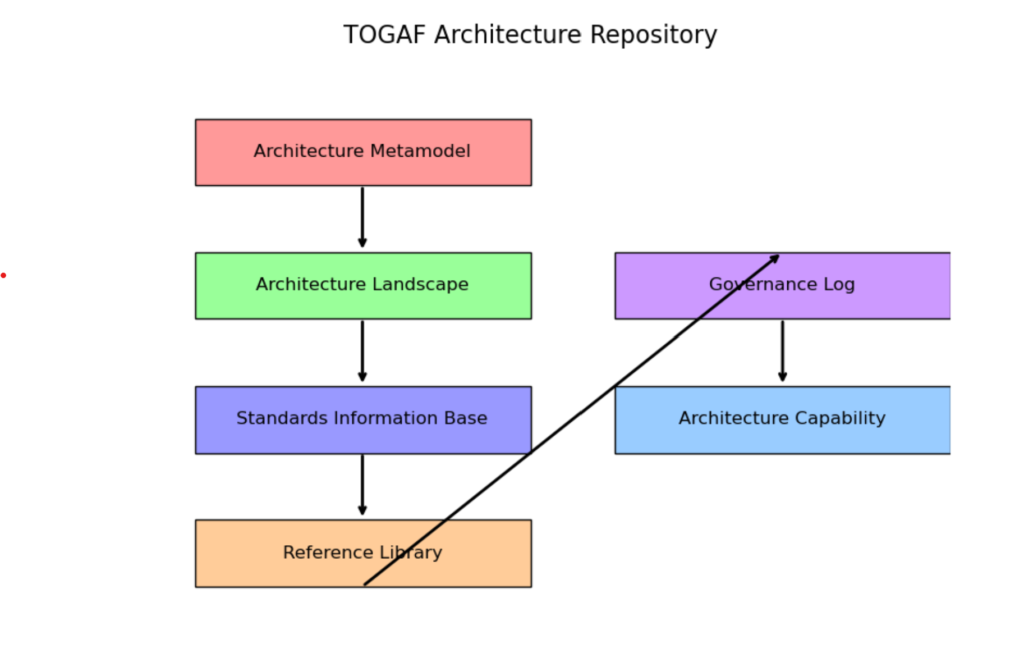The Architecture Repository
In TOGAF, the Architecture Repository is a structured storage area that houses all architectural output and reference materials used throughout the enterprise architecture lifecycle. It supports the Architecture Development Method (ADM) by providing a central location for storing:
- Models
- Patterns
- Standards
- Governance logs
- Capability assessments
This repository ensures consistency, reusability, and traceability across architecture initiatives.
🧱 Core Components of the Architecture Repository
Here’s a breakdown of the six key components:
- Architecture Metamodel
Defines the structure, semantics, and relationships of architecture artifacts. - Architecture Landscape
Represents the current, transitional, and target states of the enterprise architecture. - Standards Information Base (SIB)
A collection of standards and guidelines that govern architecture development. - Reference Library
Contains best practices, templates, and reusable architecture artifacts. - Governance Log
Records decisions, compliance assessments, and audit trails. - Architecture Capability
Describes the organization’s ability to develop and sustain enterprise architecture.
🖼️ Visual Diagram
Here’s a visual representation of the Architecture Repository and its components:

🌍 Real-World Examples
1. Global Bank – Digital Transformation
Scenario:
A multinational bank is undergoing a digital transformation to modernize its legacy systems and improve customer experience.
Use of Architecture Repository:
- Architecture Landscape maps current legacy systems and target cloud-native platforms.
- Standards Information Base ensures compliance with financial regulations like PCI-DSS.
- Reference Library provides reusable microservices patterns for customer onboarding.
Outcome:
Accelerated transformation with reduced duplication and improved regulatory compliance.
2. Government Agency – Smart City Initiative
Scenario:
A city government launches a smart city initiative integrating IoT, traffic systems, and citizen services.
Use of Architecture Repository:
- Architecture Metamodel defines relationships between IoT devices, data flows, and services.
- Governance Log tracks decisions on data privacy and vendor selection.
- Architecture Capability assesses internal readiness and identifies skill gaps.
Outcome:
Improved coordination across departments and vendors, ensuring a scalable and secure smart city architecture.
3. Retail Chain – Omnichannel Strategy
Scenario:
A retail chain aims to unify its online and in-store customer experience.
Use of Architecture Repository:
- Architecture Landscape visualizes integration points between POS systems and e-commerce platforms.
- Reference Library includes reusable APIs for inventory and customer data.
- Governance Log documents decisions on third-party integrations and data sharing policies.
Outcome:
Seamless customer experience and faster rollout of new digital services.
🧩 Conclusion
The Architecture Repository is not just a storage system—it’s the backbone of enterprise architecture governance and execution. By organizing and centralizing architectural assets, organizations can drive consistency, agility, and strategic alignment across initiatives.